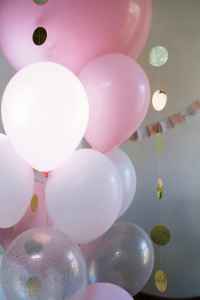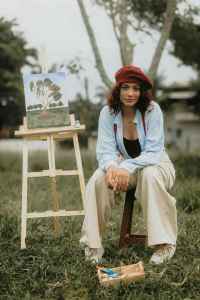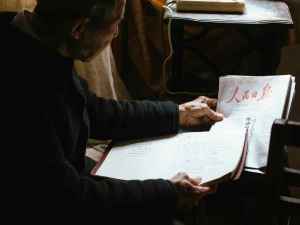The Evolving World of Creative Nonfiction: A Journey Through its Challenges, Controversies, and Enduring Allure
Introduction: Defining and Debating the Genre
Creative nonfiction, a genre that blends the art of storytelling with the rigor of factual reporting, has long been a subject of debate and controversy. Its legitimacy as a distinct literary form has been questioned by fiction writers, journalists, and academics alike, leading to a complex and often contentious history.
Lee Gutkind, a prominent figure in the world of creative nonfiction, once asked, “What is creative nonfiction?” This question encapsulates the challenges in defining and categorizing a genre that defies conventional boundaries. Attempts have been made to pin down its essence, with some describing it as a hybrid form that borrows techniques from both fiction and nonfiction, while others emphasize its focus on真实的故事and personal experiences.
The genre’s challenges extend beyond definition. Creative nonfiction has faced skepticism and disdain from traditionalists who view it as a dilution of literary standards. Journalists have criticized its perceived lack of objectivity, while fiction writers have questioned its authenticity. These controversies have shaped the genre’s evolution and continue to fuel discussions among writers, readers, and critics.
Academia and the “Literary Fist-Fights”
The struggle for recognition and legitimacy has been particularly pronounced within academia. Gutkind, a longtime advocate for creative nonfiction, has played a pivotal role in promoting its acceptance as a valid literary form. He has served as a professor, editor, and writer, dedicating his career to nurturing the genre’s growth.
Creative nonfiction’s presence in academia has expanded in recent decades, with the establishment of graduate programs and academic conferences dedicated to its study. However, tensions persist between creative nonfiction writers and traditional academics who may view the genre as lacking the rigor and scholarly merit of more established disciplines.
Gutkind’s perspective as an outsider and rebel within the academic establishment has shaped his advocacy for creative nonfiction. He has pushed against traditional boundaries and norms, challenging the status quo and advocating for the genre’s unique contributions to literature.
The Struggle for Recognition and Funding
Despite its growing presence in academia, creative nonfiction continues to face challenges in securing sustained funding and support. This marginalization has made it difficult for writers to obtain tenure and academic positions, further hindering the genre’s recognition and development.
Gutkind’s efforts to promote creative nonfiction extended beyond academia. He founded and edited Creative Nonfiction magazine, a vital platform for writers to showcase their work and connect with readers. The magazine’s closure in 2016 was a significant loss for the genre, underscoring the ongoing need for support and funding.
The decline of literary magazines dedicated to diverse and inventive work has further exacerbated the challenges faced by creative nonfiction writers. Without these platforms, emerging writers may struggle to find an audience and establish their careers.
Memoir and Personal Reflections: Gutkind’s Evolving Perspective
Gutkind’s own writing often incorporates a memoiristic approach, blending personal experiences and reflections with his exploration of creative nonfiction as a genre. His works offer a unique glimpse into his evolving perspective on the art of storytelling and the challenges it presents.
In a scene from his second book, Gutkind eavesdrops on a fight between baseball umpires. He reflects on the ethical and stylistic choices he made in capturing this moment, highlighting the tension between objectivity and subjectivity that is inherent to creative nonfiction.
Gutkind’s emphasis on self-reflection extends to his critical examination of ambition, care for others, and truthfulness in storytelling. He acknowledges the complexity and ambiguity of the writing process, challenging the notion that creative nonfiction is merely a straightforward retelling of facts.
The Enduring Thrill of Creative Nonfiction: Balancing Art and Fact
At its core, creative nonfiction is a genre that straddles the line between fiction and nonfiction, navigating the tension between creativity and factual accuracy. This delicate balance is what gives the genre its unique power and appeal.
In creative nonfiction, writers find epiphanic moments, those sudden flashes of insight that illuminate the human condition. These moments can be deeply personal or universally relatable, offering readers a glimpse into the complexities of life.
The genre also offers a sense of intimacy between writer and subject, as readers are invited into the author’s world and witness their struggles, triumphs, and discoveries. This intimacy can be both exhilarating and unsettling, challenging readers to confront their own beliefs and assumptions.
Conclusion: A Deeper Understanding of Creative Nonfiction
The ongoing debate surrounding creative nonfiction has often focused on definition and defense, at the risk of losing sight of the genre’s significance. Lee Gutkind’s dedication to the genre is a testament to its enduring value and potential for impact.
Gutkind’s journey through the world of creative nonfiction offers a deeper understanding of its challenges, controversies, and enduring allure. His work as an advocate, writer, and editor has shaped the genre’s evolution and helped to secure its place in the literary landscape.
As we continue to explore the personal meaning of creative nonfiction to Gutkind and others, we gain a renewed appreciation for the genre’s ability to illuminate the human experience, challenge our perspectives, and inspire us to see the world in new ways.








